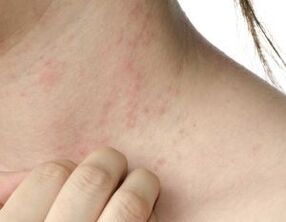
A disease recognized in good time is the key to successful treatment. This rule is especially true for diseases that are very difficult to treat. These include scaly lichen, more commonly known as psoriasis. In the past few decades this disease has hit more and more areas, affecting infants and retirees, and shifting statistics in a sad direction.
It's not for nothing that scaly lichen has generated such serious interest. Today psoriasis has evolved from classifying common skin diseases to systemic pathologies. It has been found that patients with this disease are more prone to infection, heart disease, depression, and diabetes. In the absence of a unified system of treatment, it is very important to identify psoriasis in its early stages.
The first signs of psoriasis
The symptoms of this dermatosis are recognizable even to those who have never faced a similar problem. A common sign of scaly lichen is a variegated skin rash.
This rash occurs on inflammatory areas of the epidermis and can be large or chiseled, with flaking and sometimes purulent filling. Every single element of such a rash is called a papule. Observations of patients with psoriasis have shown that the disease can show its first signs of appearance even before papules appear on the body.
In most cases, the appearance of a rash is preceded by mood swings, loss of appetite and indigestion. It has been found that, often for no reason, a depressed state very often occurs a few days before the first papules form. The problem is that patients with similar symptoms see no reason to see a doctor. But even with a timely visit to the doctor, a specialist is far from being able to determine the real cause of such a condition and correctly diagnose it.
A rash on the body is the main symptom of psoriasis. Depending on the type of scaly lichen (and there are dozens of them), the location of the lesion, the age of the patient, the disease can manifest itself in different ways.
manifestations in children
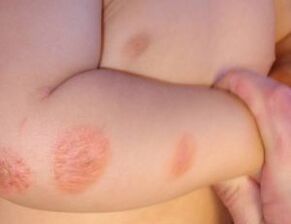
Scaly lichen can even appear in babies. This is very rare but is often exacerbated by the parents themselves. The first signs of the disease may resemble prickly heat or allergies. Adults therefore rely on their own knowledge and treat the child themselves. In most cases, infants with psoriasis see a doctor when the disease has progressed.
In infants, scaly lichen appears most often in folds: on the inner thigh, armpits between toes and hands, in the folds of skin on the neck. The appearance of papules is often accompanied by itching, so the baby can be very restless, do not sleep at night and refuse to eat.
The affected area is similar to thrush, diaper rash, or eczema. Inflamed skin turns red or pink and feels hot. Pustules can appear on time or form whole spots - plaques. Such spots usually rise above healthy skin. A distinctive feature of psoriatic plaques is the presence of dry crusts and scales on the rash. However, in a baby, papules and plaques are often located in places of profuse sweating, which makes the surface of the inflammation moist.
When these symptoms occur, it is important not to waste time on folk remedies and tips from the older generation. If a newborn has a rash (of any kind) it must be shown urgently to a pediatrician and dermatologist. Treatment for psoriasis in infants is not much different from treatment for adults. Therapeutic non-hormonal ointments, in severe cases, pills and injections are attributed to the baby.
In older children, the first symptoms of lichen dander are no different from those in adults. However, children can suffer from any type of psoriasis:
- Plaque- occurs most often. Its signs are dry, red, hot spots. Papules are covered with a hard crust with pale scales on the surface. They can appear anywhere, point by point, or solidify into plaques. Itches most often, but not necessarily.
- Pustule- characterized by the presence of fluid or pus in the papules. The initial stage is the same as that of plaque: papules with clear borders rise above the epidermis but are filled with fluid.
- Hairy part of the head- may look like scales, but over time it forms a very flaky crust on all or part of the surface of the head. The hair in the affected area becomes thinner and thinner. This type of psoriasis often occurs in the folds behind the ears.
- Palmar-plantar- almost never occurs in children. Differs in localization on the palms of the hands and soles of the feet, while "lakes" with coarse skin and scales appear.
- Flexion surfaces- are most often formed on the elbows, knees and genitals. It differs from other types of psoriasis in the lack of dandruff. The affected skin is covered with a smooth and firm crust that resembles a single patch that lies over the surface of a healthy epidermis. Color - pale pink, gray-white, pink.
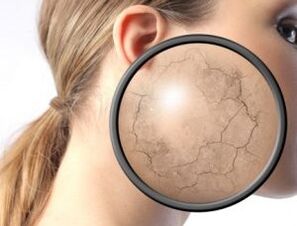
If there are manifestations of local peeling and inflammation on the skin, you should seek advice from a dermatologist. Psoriasis in children progresses very quickly, especially if it is accompanied by itching.
Damaged papules can easily become infected with infections, grow and cover an ever larger area. According to the prescribed treatment regimen, it is important to constantly monitor the child, avoid scratches on wounds and new injuries on the body, and follow a diet.
manifestations in women
The first stage of psoriasis can manifest itself at any age, but most of the time the first outbreaks occur before the age of 20, although the disease can even "sleep through" up to 50 years. Adult men and women have the same symptoms as teenagers. As people mature, the risk of psoriasis on the soles, nails, and joints increases.
World disease statistics showed that women are almost one and a half times more likely to suffer from scaly lichen, while the majority struggle with plaque psoriasis. It is not known exactly what caused this selectivity, but scientists suggest a hormonal factor among the causes of psoriasis.
Due to the same hormones, the signs of scaly lichen in girls appear most often during PMS when the hormonal background changes. A woman's natural sensitivity also makes her more prone to stress, depression, and neurosis. For a person with a predisposition to psoriasis, any psychological instability can trigger an onset of the disease.
Other causes for the worsening of the disease are:
- Skin damage (burns, cuts, open wounds);
- allergic reactions;
- infectious diseases;
- metabolic disorder;
- bad habits and unhealthy diet.
If a woman has a genetic predisposition to psoriasis, sooner or later one of the irritating factors will provoke an outbreak. In order to avoid such exacerbations in the future, the patient must carefully monitor his lifestyle.

The symptoms of psoriasis in women are the same as in men. The only gender difference occurs when the external genital organs are affected. In the genital area, girls face plaque-like and inverted appearance, sometimes pustular. The first symptoms are inflammation of the skin on the labia or pubic bone; the mucous membrane is rarely affected.
Small pinhead papules can appear several times or as a single plaster. Dandruff with genital psoriasis occurs rarely, since air cannot penetrate the localization site. A distinctive feature of the psoriasis rash is that papules and plaques protrude slightly from the surface and are hot. With such symptoms, you should immediately contact a dermatologist and gynecologist.
manifestations in men
As already mentioned, the male half suffers from scaly lichen less often than women. However, the course of the disease and symptoms remain the same for both halves. A survey and analysis of patients found that men experience the first symptoms between the ages of 22 and 25, while women do so from the age of 15. Such "late" symptoms are associated with the fact that hormonal balance occurs later in the stronger half.
Psoriasis starts the same way in men. In most cases, small papules with silver scales appear first, which then combine to form large spots - plaques and "paraffin pools".
Guttate psoriasis affects large areas of the body at the same time, but with separate small joints.
You can tell psoriasis apart from other skin conditions at home by carefully examining the inflamed elements:
- A dense, rough crust forms on the surface of papules and plaques, which peels off. White scales on the surface come off easily when scraped and resemble chips.
- If you completely remove the scales from the papule, a thin transparent film will remain on it.
- When removing the film from the psoriasis element, large drops of blood appear at this point, as there are many capillaries in the papules.
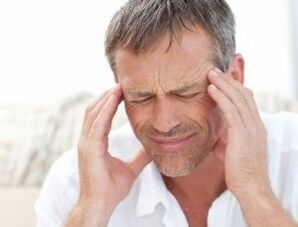
In addition to obvious symptoms, scaly lichen is sometimes associated with general weakening of the body, a depressed state, and an increase in body temperature. Psoriasis elements can be shaped differently, for example, small individual papules appear in small numbers with a point lesion. Simultaneous infection of a large area of the body (the entire back, sides, abdomen, legs) occurs with teardrop-shaped psoriasis, while the papules resemble drops in shape. Large, localized spots are a sign of coin psoriasis.
Based on observations from patients of both sexes, scientists have found that scaly lichen is more severe in men and the frequency of exacerbations is higher than in women. Reviews of experts noted that this is due to a banal unwillingness to treat. The weaker half, however, pay more attention to their health and visit the doctor much more often for prophylaxis than the stronger sex. The only type of psoriasis for which men have no hesitation in treating is the genitals. A plaque-like, backward, or pustular appearance of plaques may appear on the glans penis, scrotum, or pubic bone.
Given the sensitivity of the skin in these areas, the inflammation progresses very quickly and requires immediate treatment. If you notice a rash on the genitals, it is not worth spending time on "self-examination" and self-medication. Even profuse peeling of the skin without red inflammation and itching is considered a reason to see a doctor.
Psoriasis of the nails (onychodystrophy) and scalp in men is also common. These two types are most commonly introduced by men, according to dermatologists. Despite the fact that there are a lot of photos on the Internet with signs of the disease, symptoms of scaly lichen are perceived as fungus or dandruff and go to the doctor with an already progressive form.
If the scalp is damaged, severe flaking, sometimes itching, rough crusts occurs in places or over the entire surface of the scalp. Psoriasis of the nails is manifested by a change in the color of the nail, the appearance of pits and bumps, as well as the compaction of the nail plate and the skin around it. We will look at the gradation of symptoms in more detail below.
So the symptoms of psoriasis are no different in children, women and men. Any inflammation of the skin of the body, head or nails is the reason for a doctor's visit. If the affected areas don't itch or flake, it doesn't mean the skin isn't affected by psoriasis.
Psoriasis symptoms
The first signs of the disease usually last for several days, after which they begin to move forward quickly. Sometimes the disease can develop very slowly, "delaying" symptoms for a week or more. In any case, sooner or later the disease enters a full-fledged phase. Localization sites of psoriasis often mislead patients and the specialists themselves. The same psoriasis of the nails at the first manifestations is very difficult to distinguish from a common fungal infection.
manifestations on the scalp
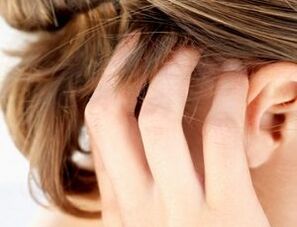
In the early stages of development, psoriasis on the scalp looks like a slight peeling. Gradually the affected areas turn reddish in color, they can be painful and itchy, sometimes protrude beyond the hairline: on the back of the head, behind the ears, on the forehead. The epidermis in inflamed areas becomes denser, the dense structure of the psoriasis rash is considered one of the distinguishing features.
This manifestation is often confused with seborrhea, in which the scalp also flakes off a lot. However, unlike seborrhea, psoriasis elements bleed when the top flaky layer is removed from them. In addition, psoriasis is characterized by coarsening of the affected skin. When this rash is accompanied by severe itching, patients often exacerbate the situation with traumatizing plaques and papules. Open wounds quickly become infected and the disease progresses.
This type of scaly lichen occurs in both children and adults. Attempts on self-medication often only worsen the picture of the disease, so at the first suspicion of psoriasis it is better to consult a specialist. A trichologist and a dermatologist can fully understand the nature of the inflammation. It is better to show the child to the leading therapist first.
Manifestations of the body skin
On the body, the first papules usually appear in places with wrinkles and friction: on the knees, in the armpits, on the elbows, on the neck. Depending on the type of psoriasis, the manifestations can vary. As with children, adults can experience many types of this disease, but a few more points are added to the list above.
In addition to the most common types of scaly lichen, those over the age of 18 can experience:
- Pustule,, the symptoms of which are not different in adults and children. It affects every part of the body and is characterized by a severe course. Often accompanied by fever and general weakness. Papules first fill with clear fluid, which is what sets this type of disease apart from others. If they are damaged and infected again, pus will appear inside them.
- Erythrodermic psoriasis.It is considered to be a very complex form of this disease. Usually it does not appear immediately, but rather starts from plaque or pustules. An independent course is also possible. Unlike normal psoriasis, this affects large areas of the body and develops very quickly. The papules can be "empty" or filled with pus. If psoriatic elements hurt and grow at a rapid rate and affect large areas of the body, then it is most likely erythroderma.
- teardrop-shaped, which, as we have already found out, is characterized by punctual and frequent skin lesions. At the onset of the disease, the papules are very small, with well-defined margins and a convex teardrop shape. At the first sign, it affects small areas of the body, but gradually grows. Can appear on the arms, legs, stomach, back, and neck.
- Arthric psoriasis.The worst that can happen with this disease is joint damage. Most often this occurs in people who already have one of the types of psoriasis, but can also appear as a disease on its own. It affects the small joints first: the phalanges of the toes and hands often move to more important places. The first signs of him are pain and joint pain, fever, swelling of the phalanges of the fingers.
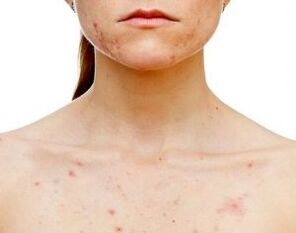
Arthric and erythrodermic psoriasis are particularly dangerous because they bring more serious complications. With joint damage, the disease threatens with a real disability. But most often the most severe forms of the disease occur in patients who already have psoriasis.
Leg manifestations
Legs are most often affected in the knee area, it can be an inverse or plaque psoriasis. In this case, the knee is completely or partially covered with a dense crust with a rough white surface. Most often, with the defeat of the knees, the same thing happens to the elbows, but not necessarily. We have already learned how to determine psoriasis from papules.
Legs are also a common teardrop-shaped lesion zone. In this case, most of the leg is covered with small papules, which at the same time occupy the area from the lower leg to the upper thigh. Elements are inflamed, hot, sometimes itchy and injured.
Coarseness of the skin, painful itchy calluses on the feet suggest plantar psoriasis, while at the same time it can "touch" the palms of the hands. This is a very common form of the disease because the feet are the most vulnerable to mechanical stress. The skin at the site of the lesion tears, peeling, itchy. It is important to seek advice in a timely manner as fungus and infection can invade the cracks and cause serious complications.
manifestations on nails
Onychodystrophy affects the nail plate. It often accompanies other, more complex forms of psoriasis, but sometimes it occurs on its own. Also, with such a disease, patients usually come very late and mistake this disease for a fungus. The symptoms of the disease are:
- changing the nail shape;
- depressions and tubercles on the nail plate;
- change in nail color (light brown, cloudy, with dark spots);
- Coarsening of the skin under and around the nail;
- Overgrowth of the skin on the nail;
- Nail peeling along and across the plate.
Neither is it worth time to treat this type of disease. It progresses slowly but steadily so that the patient can completely lose the nail without further recovery. In this case, you also need to contact a dermatologist.
Hand manifestations
Psoriasis affects the arms as often as the rest of the body. The elbow is most common under his "eyes" as it is most exposed to friction, bending and damage. In this area an inverted, plaque-like, pustular psoriasis is localized. In this case, the first signs of the disease develop in the same way as on the knees.
In the armpits there is a very problematic area on the arms. Any kind of disease progresses very quickly here, as it is a warm and humid place that does not have good access to the air. In this case, the psoriasis is not always covered with a scaly crust. Plaques and pustules can resemble normal irritation or a diaper rash.
If the inflamed points grow and multiply, then urgently need to consult a dermatologist.
manifestations of the disease in joint damage
As mentioned earlier, the small joints in the fingers and toes are most commonly affected in psoriatic arthritis. In a difficult course, this disease affects the spine and pelvic joints. It is very difficult to identify the disease at an early stage, especially at home. Unfortunately, diagnosis is very difficult. Even clinics today can only determine the consequences of joint damage and cannot prevent the disease.
In most cases, arthropathic psoriasis is a complication of another form of the disease and rarely acts as a disease on its own. A special feature is that it affects the connective tissue around the joint. For example, if the finger joints are affected, the patient will develop dactylitis - an inflammation of all the tissues in the fingers. At the same time, they increase in volume, do not bend and are very painful.
Finally
Today there is no single system for treating psoriasis or medicine that would be equally effective in helping every patient with the disease. Scaly lichen is classified as a systematic non-communicable disease that occurs in a chronic form. It is impossible to cure it once and for all, but it is entirely possible to achieve long-term remission. The early detection of the disease simplifies this task considerably.
For prophylaxis, doctors recommend having a general examination and tests every six months or one year, even if there is no suspicion of a disease. If you experience a rash, persistent irritation or large flakes of skin, you should consult a specialist immediately and not waste valuable time on dangerous self-medication.

























